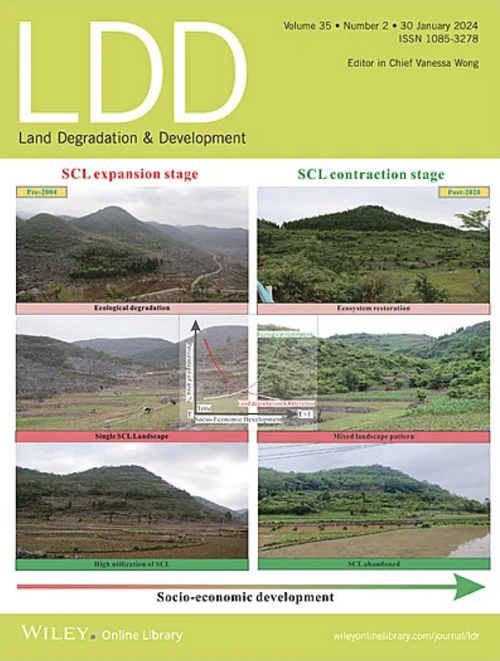The Relationship Between Soil Organic Matter Composition and Soil Enzymes Activities in Various Land Use Types in the Upper Watershed of Danjiangkou Reservoir in China
IF 3.6
2区 农林科学
Q2 ENVIRONMENTAL SCIENCES
引用次数: 0
Abstract
Soil organic matter (SOM) was the primary component of the global terrestrial carbon sink. Soil enzymes were important drivers of soil metabolism facilitating the materials cycling and the energy flow in soils. However, the relationship between soil enzymes and SOM composition in various land use types had not been clearly understood. In the current study, pyrolysis gas chromatography/mass spectrometry (Py‐GC/MS) was used to analyze the SOM composition of three land use types (grassland, forest, and cropland) and the relationship between soil enzyme activity and SOM composition in the upper watershed of Danjiangkou Reservoir in China. The activity of C‐cycling enzymes glucosidase, cellobiose glycosidase, xylosidase, P‐cycling enzyme alkaline phosphatase, and N‐cycling enzyme leucine aminopeptidase in grassland was the highest but the activity of S‐cycling enzyme methylumbelliferryl sulfate potassium salt was lowest in grassland. The activity of N‐cycling enzyme leucine aminopeptidase was the highest in forest. Aliphatic (23.1%–25.1%), N‐compounds (16.69%–21.17%), and aromatic (11.76%–12.61%) were the most abundant SOM components in the three land use types and the complexity of SOM molecular network in forest was the highest. Additionally, all the C‐cycling enzymes and N‐cycling enzyme acetylglucosaminidase were significantly positively related to the proportion of N‐compounds and polysaccharides but significantly negatively related to the proportion of terpenoids. Our study emphasized that land use significantly affected soil enzyme activities and SOM composition and further revealed that the difference in the activity of C‐cycling and N‐cycling enzymes in various land uses was probably related to the proportion of nitrogen‐containing compounds, polysaccharides, and terpenoids in SOM.求助全文
约1分钟内获得全文
求助全文
来源期刊

Land Degradation & Development
农林科学-环境科学
CiteScore
7.70
自引率
8.50%
发文量
379
审稿时长
5.5 months
期刊介绍:
Land Degradation & Development is an international journal which seeks to promote rational study of the recognition, monitoring, control and rehabilitation of degradation in terrestrial environments. The journal focuses on:
- what land degradation is;
- what causes land degradation;
- the impacts of land degradation
- the scale of land degradation;
- the history, current status or future trends of land degradation;
- avoidance, mitigation and control of land degradation;
- remedial actions to rehabilitate or restore degraded land;
- sustainable land management.
 求助内容:
求助内容: 应助结果提醒方式:
应助结果提醒方式:


